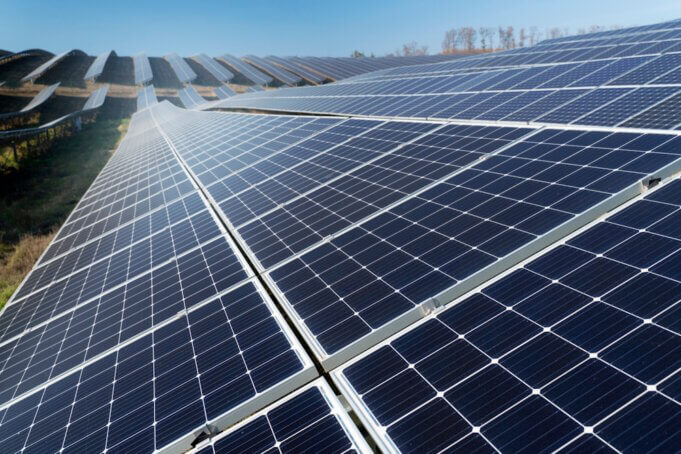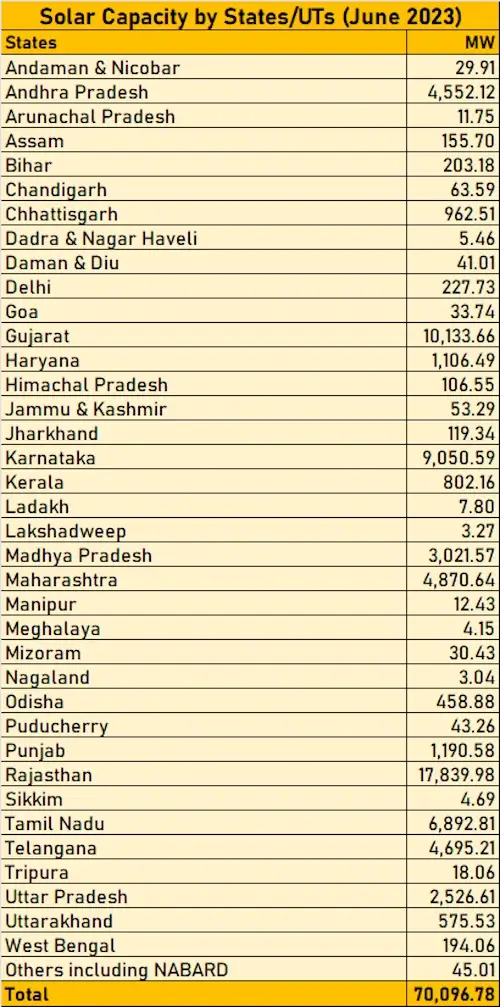The Union Minister for New & Renewable Energy and Power state that as of June 30, 2023, the country has successfully installed a cumulative solar power capacity of 70,096 megawatts (MW). The Minister also highlighted that the nation has an estimated solar power potential of 7,48,990 MW. To harness this considerable potential, the government has introduced several policy measures. Some of them are:
- Allowing Foreign Direct Investment (FDI) of up to 100 percent through the automatic route.
- Exempting Inter State Transmission System (ISTS) charges for inter-state sale of solar and wind power until projects are commissioned by June 30, 2025.
- Defining a trajectory for Renewable Purchase Obligation (RPO) up to the year 2029-30.
- Developing new transmission lines and sub-stations under the Green Energy Corridor Scheme to facilitate the transfer of renewable power.
- Establishing standards for the deployment of solar photovoltaic systems/devices.
- Creating a Project Development Cell to attract and facilitate investments.
- Issuing Standard Bidding Guidelines for competitive tariff-based procurement of Power from Grid Connected Solar PV and Wind Projects.
- Ensuring that power is dispatched based on Letter of Credit (LC) or advance payment to ensure timely payment to Renewable Energy (RE) generators.
- Introducing Promoting Renewable Energy through Green Energy Open Access Rules 2022.
- Enforcing “The Electricity (Late Payment Surcharge and related matters) Rules (LPS rules).”
- Launching the Green Term Ahead Market (GTAM) for the sale of Renewable Energy Power through exchanges.
- Issuing bidding trajectories for renewable energy projects through Renewable Energy Implementing Agencies.
- Launching the National Green Hydrogen Mission to establish India as a global hub for green hydrogen and its derivatives.
Furthermore, the Minister shared that the government is implementing several schemes to extend the benefits of solar energy to citizens and farmers across the nation. These operational schemes include:
- The Solar Park Scheme aiming to establish a minimum of 50 Solar Parks with a target of 40,000 MW of solar power projects.
- A scheme for setting up 12,000 MW of Grid-Connected Solar PV Power Projects by government producers with Viability Gap Funding (VGF).
- Installation of Grid-Connected Solar Rooftop Power Plants.
- Pradhan Mantri Kisan Urja Suraksha-evam-Utthaan Mahabhiyan (PM-KUSUM).
- A production-linked incentive scheme under the “National Programme on high efficiency Solar PV Modules.”
- The Green Energy Corridor Scheme for intra-state transmission.
The “Development of Solar Parks and Ultra Mega Solar Power Projects” scheme, allocated Rs 8,100 Crores has been extended until the fiscal year 2025-26 without any additional financial commitment. As of now, 50 Solar Parks with a collective capacity of 37,990 MW have been sanctioned across 12 states. Among these, 11 Solar Parks with a combined capacity of 8,521 MW have been completed, and 7 Solar Parks with a total capacity of 3,985 MW have been partially completed. The electricity generation capacity of solar projects within various Solar Parks has grown by 2,292 MW over the past three years. The initiative has also acquired approximately 69,000 hectares of land for Solar Parks, encouraging the use of non-agricultural and waste land for park development.












